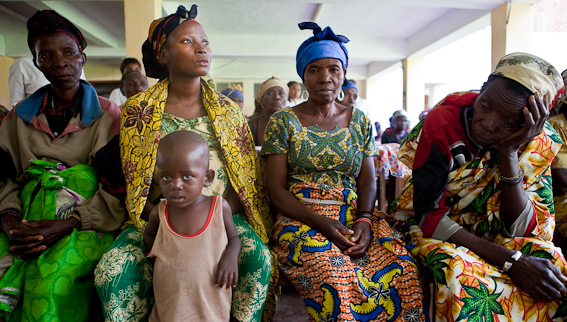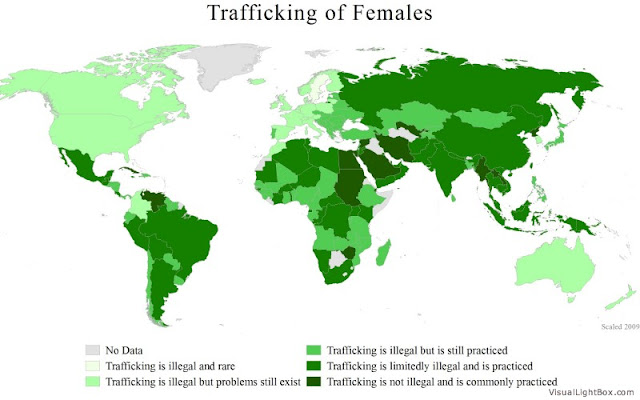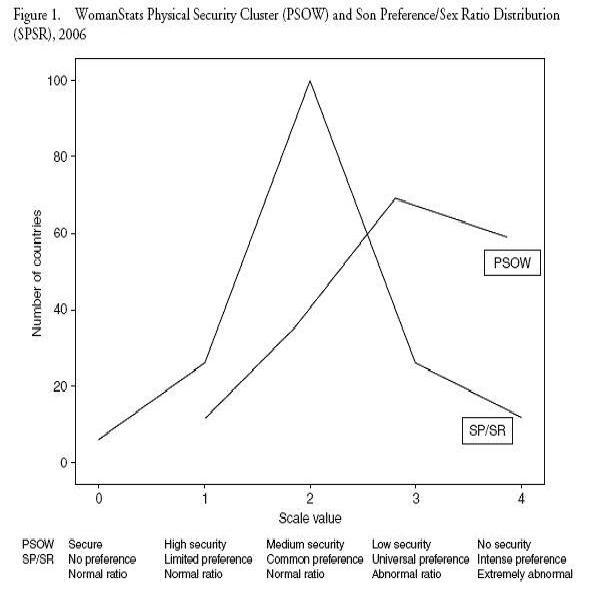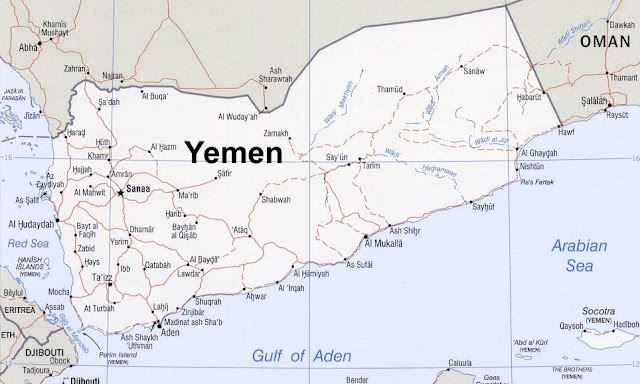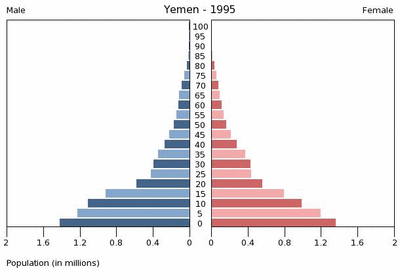Showing posts from category security.
-
Fire in the Hole: A Look Inside India’s Hidden Resource War
›August 18, 2010 // By Schuyler Null -
‘Restrepo’: Inside Afghanistan’s Korengal Valley
›August 2, 2010 // By Marie HokensonRestrepo, the riveting new documentary film from Tim Hetherington and Sebastian Junger, follows a platoon of U.S. soldiers deployed in the dangerous Korengal Valley of Afghanistan. As a cadet at West Point majoring in human geography, I was fascinated to watch the ways the soldiers confronted and adapted to the challenges posed by the local culture of the remote Afghan community surrounding their outpost.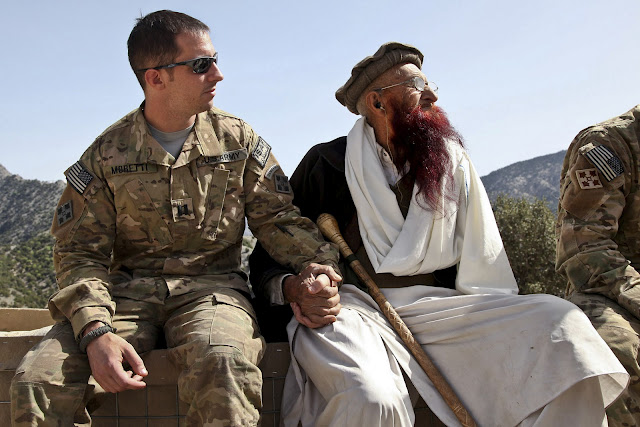
West Point’s human geography program delves into the relationships between facets of society and geography that may also have potentially significant security implications. In the wars in Iraq and Afghanistan, U.S. troops fight insurgents in difficult environments – from heavily urbanized cities to extremely remote valleys – while interacting with civilian populations with radically different languages and cultures.
Restrepo: Culture in Action and Under Fire
At the remote outpost Restrepo, named in memory of a medic killed in action, the platoon receives daily fire from insurgents as they seek to improve security enough to allow the construction of a road through the valley.
At a weekly shura, the company commander explains the benefits of the road to the village elders, yet they are either unconvinced or uninterested. This frustrating meeting reveals a cultural disconnect: the Americans see the road as the way to win Afghan “hearts and minds” by facilitating progress and bringing more revenue to the community, but the Afghans are suspicious of the Americans’ motives and promises, and not convinced of the benefits.
Another culture clash arises when a cow is caught in the outpost’s concertina wire. The soldiers kill the seriously injured cow, but this proves to be a continual source of tension in negotiations between the soldiers and the locals. Killing the cow was illegal, say the Afghan elders, who seek financial compensation that the Army is not willing to provide. Perhaps better understanding of regional culture could have prevented this relatively minor incident from souring relations.
On the other hand, by attending the traditional shura gatherings with village elders, the U.S. soldiers are showing their respect for Afghan culture while facilitating negotiations and, potentially, the sharing of useful intelligence.
Although not shown in the film, the U.S. military also demonstrates its understanding of Afghan culture through the growing use of female soldiers to reach out to Afghan women. As many women in Afghanistan are not allowed to be seen by unrelated men, female soldiers are tasked with searching houses and Afghan women, as well as assessing their need for aid and gathering intelligence from them.
West Point: Culture in Theory and Practice
Dealing with the problems faced by today’s soldiers, like those in Restrepo, requires understanding the current conflict landscape and its security implications. Understanding the influence of religion, language, development, and people on the world’s geography is vital to mapping the combat terrain.
Human geography instruction at West Point provides cadets with more perceptive views of other countries and the complex problems they face. Military geography analyzes urban and natural environments, as well as related interactions, such as the impact of population dynamics and nature resources on military operations. Land-use planning and management addresses conflicts over land use and environmental strategies. Other opportunities, such as study-abroad programs and interactions with foreign cadets, increase our exposure to other cultures and geographies.
Through my study of human geography, I have gained a much greater understanding of the people and countries where I travel and work today – and where I will go in the future as a commissioned officer in the U.S. Army.
Marie Hokenson is a cadet at the United States Military Academy at West Point and an intern with the Woodrow Wilson Center’s Environmental Change and Security Program.
Photo Credit: “Mutual support,” courtesy of flickr user The U.S. Army. -
Ban Ki-moon: Natural Resources Should Be Part of Peacebuilding
›July 30, 2010 // By Schuyler NullNatural resource management is a critical component of the peacebuilding process according to a new report from UN Secretary-General Ban Ki-moon. The report, presented to the UN Security Council and General Assembly this month, is a follow-up to last year’s presentation by the Secretary-General’s office on peacebuilding in the immediate aftermath of conflict.
The Secretary-General singles out the 2009 UN Environment Programme (UNEP) study “From Conflict to Peacebuilding: The Role of Environment and Natural Resources” for demonstrating the recent links between land use, natural resources, frequency of conflict, and conflict relapse. The Secretary-General writes:44. I wish to highlight two areas of increasing concern where greater efforts will be needed to deliver a more effective United Nations response. First, natural resources: a recent study by the United Nations Environment Programme concluded that 40 per cent of internal conflicts over a 60-year period were associated with land and natural resources, and that this link doubles the risk of conflict relapse in the first five years. Efforts have been made to draw early attention to these risks and to improve inter-agency coordination to address them, including by strengthening national capacity to prevent disputes over land and natural resources, as described in paragraph 31 above. Examples include programmes in Afghanistan, Timor-Leste and the Sudan, where coordination among several United Nations entities addressing land and natural resource management has demonstrated the importance of an inclusive approach. In order to further deliver on the ground I call on Member States and the United Nations system to make questions of natural resource allocation, ownership and access an integral part of peacebuilding strategies.
ECSP Director Geoff Dabelko calls the inclusion of this language “an important step towards integrating environmental issues into broader UN peacebuilding efforts and providing critical top-level political support for this integration effort.”
UNEP’s Post-Conflict and Disaster Management Branch (PCDMB) has been working to support a variety of UN bodies on integrating environment and natural resources into the peacebuilding process. Recent PCDMB efforts have been based in Afghanistan, Iraq, Lebanon, Sierra Leone, the DRC, and Sudan. New Security Beat asked UNEP PCDMB’s Director of Policy and Planning David Jensen to reflect on the new report via email:I’m thrilled to finally see that after over 10 years of work by UNEP and a variety of other organizations and scholars, these issues have finally been recognized at the highest political level. There is no longer any doubt that the mismanagement of natural resources can be a key factor in contributing to violent conflict. At the same time, the very recognition that environmental issues and natural resources can contribute to violent conflict underscores their potential significance as pathways for cooperation, transformation, and the consolidation of peace in war-torn societies.
As Jensen writes in ECSP Report 13, “If people cannot find clean water for drinking, wood for shelter and energy, or land for crops, what are the chances that peace will be successful and durable? Very slim.”
Last fall, Jensen predicted the UN was finally approaching a fundamental tipping point for inclusion of natural resource issues in the broader peacebuilding process, and the Secretary-General appears to have proven him right.
Photo Credit: “Secretary-General Addresses General Assembly,” courtesy of flickr user United Nations Photo.Addressing Gender-Based Violence to Curb HIV
›July 28, 2010 // By Marie HokensonAt the recent International AIDS Conference in Vienna, Austria, an astonishing development in the campaign to stem the spread of HIV/AIDS was unveiled—a microbicide with the ability to reduce the risk of transmission of HIV. This welcome development coincides with an intensified focus on women’s health and security needs among donors, especially the United States.
At the conference, the “Gender Programming and Practices: Practical Approaches with HIV and AIDS” session took an integrated approach, examining the links between gender-based violence and HIV/AIDS infection. Women are more vulnerable to gender-based violence and HIV infection than men, particularly in parts of sub-Saharan Africa where “girls and women aged 15 to 19 are three times more likely” to become infected with HIV than men in the same age group, according to the World Bank.
Michelle Moloney-Kitts, with the Office of the U.S. Global AIDS Coordinator, said that gender-based violence “affects not only public health, but [also] the ability of women and girls to contribute to developing their countries.” Since women play integral roles in supporting their families and communities in developing nations, their absence or weakened capacity due to HIV infection, injuries, or unwanted pregnancy can have larger repercussions for economic development and community health.
Deep Roots: Changing Minds About Gender-Based Violence
Elizabeth Mataka, the UN Secretary-General’s special envoy for AIDS in Africa, described the obstacles facing female victims of gender-based violence as “deep-rooted social, economic, legal, and cultural affairs” in their communities. Mataka asserted that “communities must be engaged” through a “change in mindset” in order to allow these women to “claim their basic human rights.” Scrutinizing the paucity of women’s organizations, she cited a “serious shortage of women’s leadership at the grassroots level” as a problem that must be overcome to empower and protect women.
Pamela Barnes, a co-leader of the Partnership to End Sexual Violence Against Girls, highlighted the extent of this “deep-rooted societal issue.” She pointed out that a 2007 Swaziland study found the most “common venue for sexual violence was…within the homes of the victims.”
Rui Bastos, representing Mozambique’s Ministry of Health, added that there is a pressing need to “change relationships between men and women,” and called for a shift in the current relationship dynamic to “give power to the women.” Noting the low number of men receiving HIV treatment, he called on men to “increase demand in treatment” in order to stem the spread of the disease.
Silent Voices: Talking About Sexual Violence Against Minors
Since the Swaziland survey found that “30 percent of the respondents indicated that they had experienced some form of sexual violence prior to the age of 15,” Barnes said greater efforts must be made to educate children about how to protect themselves from sexual violence. She added that efforts to protect children should also address other “risk factors for abuse [which] include lack of education, exposure to emotional abuse, and witnessing sexual assault.”
At a recent Wilson Center event on sexual violence against minors, Jama Gulaid of UNICEF Swaziland said that while talking about sexuality is not easy, “when you bring in violence it is even more difficult.” For that reason, Gulaid said, “you have to do two things—you have to share information and you have to present it in certain ways.” He explained that Swaziland was addressing the issue by relying on school-based interventions, which include trained community-child protection groups, toll-free telephone lines, case investigation services, and personal counseling.
Prevention First: Scaling Up to Stop Rape
While the new microbicide might help female victims of sexual violence avoid HIV infection, it will not stop the problem of gender-based violence. That is why Moloney-Kitts called on donors and NGOs to “scale up gender-based violence programs,” but in a way that goes beyond simply improving “post-rape care” and instead places greater emphasis on prevention efforts.
Not only would better rape prevention help reduce HIV and STD infection rates, but it would also help women avoid psychological damage and unwanted pregnancies—and, as Moloney-Kitts pointed out, improve economic development and enhance public health at the same time.
For more on gender-based violence, see these Wilson Center events:- Gender-Based Violence in Sub-Saharan Africa: A Review of Demographic and Health Survey Findings and Their Use in National Planning
- From Relief to Development: Gender-Based Violence Interventions in Conflict and Post-Conflict Contexts
- Dynamics Of Sexual Violence In The Eastern Democratic Republic Of Congo: Perpetrators, Community Response, and Policy Implications
Photo Credit: “Congo Kivu Violences Panzi,” used courtesy of flickr user andré thiel.Cleo Paskal: India Is Key to Climate Geopolitics
›July 27, 2010 // By Wilson Center Staff“Copenhagen was many things to many people,” said Chatham House’s Cleo Paskal, in a video interview with the Wilson Center’s Environmental Change and Security Program, but “what was very clear was that India, specifically, was playing quite a strong, clear role in deciding how alignments would be working.” We spoke to Paskal following her presentation at a recent Wilson Center event.
WomanStats Maps Gender-Linked Security Issues
›The WomanStats Project has published an array of maps depicting the challenges and conditions facing women worldwide today. The maps, which serve as a visual representation of the project’s database, cover gender-linked security issues such as: son preference and sex ratio, physical security, inequity in family law, human trafficking, polygamy, maternal mortality, discrepancy in education, government participation, intermingling between the sexes in public, and required dress codes.
These maps help researchers visually see correlations between two or more map themes. For example, Women’s Physical Security is moderately correlated to fertility rate, while Sex Ratio/Son Preference is not highly correlated to any other measures tested, such as women in the labor force, democracy, political rights, and economic rights. In addition to maps, the WomanStats Project’s database was used to create graphs that compare the scale values of Physical Security Clusters and Son Preference/Sex Ratio Distributions to the number of countries the scale level affected.
Some of the maps would benefit from additional functionality. For example, the “Women’s Physical Security” map broadly categorizes states based on high, medium, and low levels of security, but the legend is not linked to the definitions of these classifications. Another useful addition would be data tables that rank the countries for each theme. Such enhancements would better enable the viewer to perform empirical and spatial analysis of the status of women.
Overall, the WomanStats Project maps offer the viewer engaging visual depictions of how women’s lives vary across the world, and how countries compare to each other in terms of women’s security.
Josephine Kim is a cadet at the United States Military Academy at West Point and an intern with the Woodrow Wilson Center’s Environmental Change and Security Program.
Map and graph used courtesy of the WomanStats Project.Chad Briggs: Dealing With Risk and Uncertainty in Climate-Security Issues
›July 21, 2010 // By Wilson Center StaffWe must do more than simply take our current understanding of climate-change risk and extrapolate it into the future, asserted Chad Briggs of the Berlin-based Adelphi Research in a video interview with the Wilson Center’s Environmental Change and Security Program.
Demographics, Depleted Resources, and Al Qaeda Inflame Tensions in Yemen
›July 21, 2010 // By Schuyler NullA second spectacular Al Qaeda attack on Yemeni government security buildings in less than a month is a worrisome sign that the terrorist group may be trying to take advantage of a country splitting at the seams. U.S. officials are concerned that Yemen, like neighboring Somalia, may become a failed state due to a myriad of challenges, including a separatist movement in the south, tensions over government corruption charges, competition for dwindling natural resources, and one of the fastest growing populations in the world.
Wells Running Dry
Water shortages have become commonplace in Yemen. Last year, the Sunday Times reported that Yemen could become the first modern state to run out of water, “providing a taste of the conflict and mass movement of populations that may spread across the world if population growth outstrips natural resources.”
Earlier this year, government forces came to blows with locals over a disputed water well license in the south. Twenty homes were damaged and two people were killed during the resulting eight day stand-off, according to Reuters.
The heavily populated highlands, home to the capital city of Sanaa, face particularly staggering scarcity. Wells serving the two million people in the capital must now stretch 2,600 – 3,200 feet below the surface to reach an aquifer and many have simply dried up, according to reports.
Yemeni Water and Environment Minister Abdul-Rahman al-Iryani told a Reuters reporter that the country’s burgeoning water crisis is “almost inevitable because of the geography and climate of Yemen, coupled with uncontrolled population growth and very low capacity for managing resources.”
Nineteen of Yemen’s 21 aquifers are being drained faster than they can recover, due to diesel subsidies that encourage excessive pumping, loose government enforcement of existing drilling laws, and growing population demand. Qat farmers in particular represent an excessive portion of water consumption; growing the popular narcotic accounts for 37 percent of agricultural water consumption. Meanwhile, according to a study by the World Food Programme this year, 32.1 percent of the population is food insecure and the country has become reliant on imported wheat.
Yemen’s other wells – the oil variety – have long been the country’s sole source of significant income. According to ASPO, oil has historically represented 70-75 percent of the government’s revenue. But recent exploration efforts have failed to uncover significant additions to Yemen’s reserves, and as a result oil exports have declined 56 percent since 2001. The steep decline has pushed Yemeni authorities to look to other natural resources, such as rare minerals and natural gas, but the infrastructure to support such projects will take significant time and money to develop.
The Fastest Growing Population in the Middle East
Despite the country’s limited resources, Yemen’s population of 22.8 million people is growing faster than any other country in the Middle East. According to projections from the Population Reference Bureau, by 2050, Yemen’s burgeoning population is expected to rival that of Spain.
Fully 45 percent of the current population is under the age of 15 – a troubling ratio that is expected to grow in the near future. The charts from the U.S. Census Bureau embedded below illustrate the dramatic growth of the country’s youth bulge from 1995 through 2030.
A poor record on women’s rights and a highly rural, traditional society contribute to these rapid growth scenarios. According to Population Action International’s Elizabeth Leahy Madsen, only 41 percent of Yemeni women are literate and their total fertility rate is well over the global average. A recent survey from Social Watch ranking education, economic, and political empowerment rated Yemen last in the world in gender equity. Yemeni scholar Sultana Al-Jeham pointed out during her Wilson Center presentation, “Yemeni Women: Challenges and Little Hope,” that there is only one woman in a national parliament of 301 members and that ambitious political women routinely face systematic marginalization.
A contributing factor is that 70 percent of Yemen’s population live outside of cities – far more than any other country in the region – making access to education and healthcare difficult, especially in the large swaths of land not controlled by the government.
External migration from war-torn east Africa adds to Yemen’s demographic strains. According to IRIN, approximately 700,000 Somali refugees currently reside in country, and that number may grow as the situation in Somalia continues to escalate. Within Yemen’s own borders, another 320,000 internally displaced people have fled conflict-ridden areas, further disrupting the country’s internal dynamics.
Corruption and Rebellion
Competition over resources, perceived corruption, and Al Qaeda activity have put considerable pressure on the Saleh regime in Sanaa. The government faces serious dissidence in both the north and the south, and the Los Angeles Times reports that talk of rebellion is both widespread and loud:Much of southern and eastern Yemen are almost entirely beyond the central government’s control. Many Yemeni soldiers say they won’t wear their uniforms outside the southern port city of Aden for fear of being killed. In recent months, officials have been attacked after trying to raise the Yemeni flag over government offices in the south.
USAID rates Yemen’s effective governance amongst the lowest in the world (below the 25th percentile), reflecting Sanaa’s poor control and high levels of corruption. Some reports claim that up to a third of Yemen’s 100,000-man army is made up of “ghost soldiers” who do not actually exist but whose commanders collect their salaries and equipment to sell on the open market.
The West and Al Qaeda
In testimony before Congress earlier this year, Assistant Secretary of State Jeffrey Feltman called on the Yemeni government to take a comprehensive approach to “address the security, political, and economic challenges that it faces,” including its natural resource and demographic challenges.
The Yemeni government is poised to receive $150 million in bilateral military assistance from the United States. But some experts are critical of that approach: Dr. Mustafa Alani of the Dubai-based Gulf Research Center told UN Dispatch that, “you are not going to solve the terrorist problem in Yemen by killing terrorists,” calling instead for investing in economic development.
USAID has budgeted $67 million for development assistance, economic support, and training programs in Yemen for FY 2010 and has requested $106 million for FY 2011 (although about a third is designated for foreign military financing).
While Yemen’s Al Qaeda presence continues to captivate Western governments, it is the country’s other problems – resource scarcity, corruption, and demographic issues – that make it vulnerable to begin with and arguably represent the greater threat to its long-term stability. The United States and other developed countries should address these cascading problems in constructive ways, before the country devolves into a more dangerous state like Somalia or Afghanistan. In keeping with the tenets of the Obama administration’s National Security Strategy, an exercise in American soft power in Yemen might pay great dividends in hard power gains.
Sources: Association for the Study of Peak Oil – USA, Central Intelligence Agency, Congressional Research Service, Guardian, IRIN, Los Angeles Times, New York Times, Population Action International, Population Reference Bureau, ReliefWeb, Reuters, Social Watch, Sunday Times, U.S. Census Bureau, U.S. Department of State, UN Dispatch, USA Today, USAID, World Food Programme.
Photo Credit: “Yemen pol 2002” via Wikimedia Commons courtesy of the U.S. Federal Government and “Yemen youth bulge animation” arranged by Schuyler Null using images courtesy of the U.S. Census Bureau’s International Data Base.




